Main Comma Splice Takeaways:
- Comma splices lead to run-on sentences.
- Run-on sentences happen when you join two independent clauses using a comma.
- Independent clauses are sentences that contain a subject and verb and can stand alone.
- Dependent clauses also contain a subject and verb but don’t form a complete thought.
- You can identify a comma splice by evaluating whether two clauses that can stand alone.
- Comma splices may be used in creative writing, but they are still viewed as being technically incorrect.
Some grammar rules are made to be broken. But before you throw caution to the wind, make sure you know the right way to do things. Take comma splices, for example. These pesky little problems are the bane of editors everywhere. However, many writers don’t even know when they’re committing this literary crime.
Here’s how to identify comma splices and what you can do to avoid them for good.
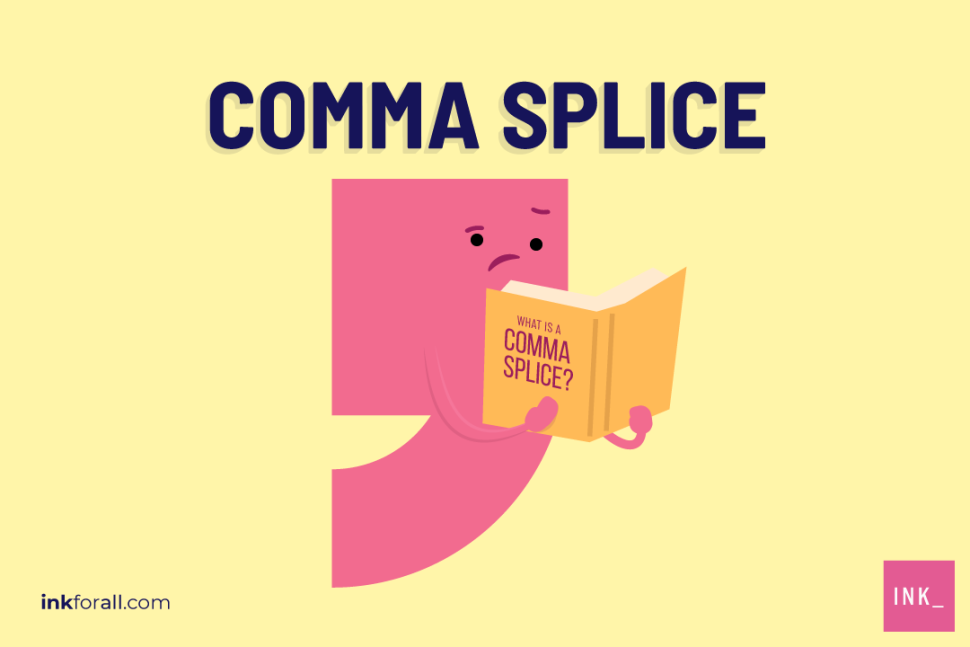

What is a Comma Splice?
A dependent clause, on the other hand, is a group of words with a subject and a verb. However, it does not express a complete thought and can not stand alone. In short, it is not a sentence. For it to make sense, it needs to be attached to an independent clause.
While joining an independent clause to a dependent clause using a comma is correct, joining two independent clauses using a comma is not. See examples below.
Are Comma Splices Bad?
“Bad” is a subjective word, but comma splices can make your writing confusing. While there is a tendency to use commas as a pause, that’s not their real intent. Overusing comma splices creates a series of run-on sentences. The reader is inundated with words, and it becomes difficult to follow the author’s train of thoughts. It’s like someone talks continuously without taking a breath.
Some writers may take creative license and insert a comma splice as a stylistic choice. While you may get away with that in informal settings, comma splices generally do not go over well in professional or academic writing.


How Do You Identify a Comma Splice?
A comma splice, a type of run-on sentence, is easy to spot. Just look for two independent clauses separated by a comma but lacking a coordinating conjunction (and, or, but, etc.). If those two clauses can stand on their own, you know they’re too strong to rely on a comma. Think of a comma like a crutch; if a clause can’t stand on its own, it might need one. Whole sentences? Not so much.
How Do You Fix a Comma Splice?
To fix a comma splice, you need to remove the error while maintaining the original meaning of the sentence. First, you can split the joined independent clauses into two separate sentences. Your second option is to add a coordinating conjunction to the sentence right after the comma. You can also tweak one of the independent clauses to become a dependent clause. Or, you can replace the comma with a semicolon if the two clauses are closely related.
Splitting Independent Clauses
To split two independent clauses featuring a comma splice, simply remove the comma and add a period or a semicolon in between.
Adding a Coordinating Conjunction
Coordinating conjunctions are words such as and, for, but, so, and or that can be used to join two phrases or clauses. To fix a comma splice, add the appropriate coordinating conjunction after the existing comma.
Turn One Independent Clause Into a Dependent Clause
Your third option for fixing a comma splice is to turn one of the two independent clauses into a dependent clause. This typically requires adding a subordinating conjunction, such as when, as long as, than, whether, whenever, while, or though.


Comma Splice Examples
Here are some more examples of comma splices and how you might fix them:
Examples:
Fixing comma splices may not fix the world, but it will make your writing a lot more professional. And all it takes is a teeny, tiny period.
Quick Comma Splice Grammar Quiz
Comma Splice Question #1
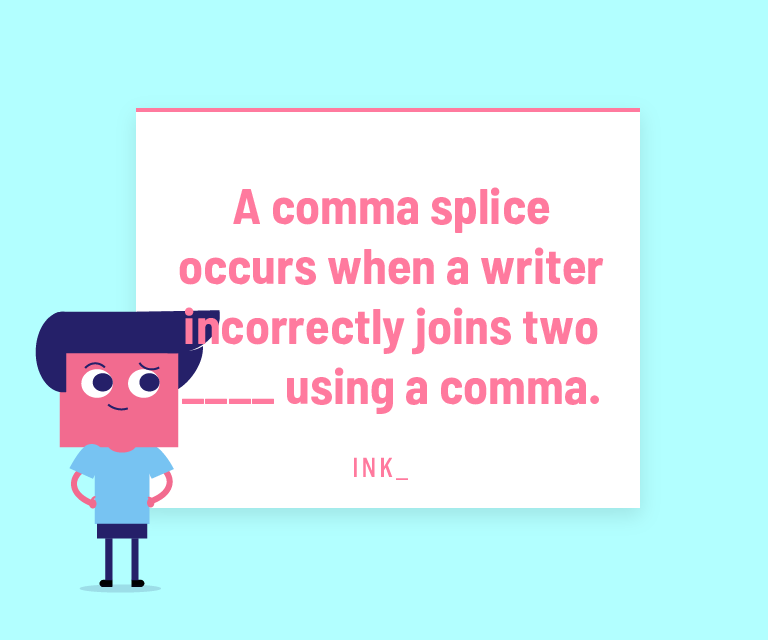

The answer is A. A comma splice occurs when you join two independent clauses or complete thoughts using a comma.
Comma Splices Question #2
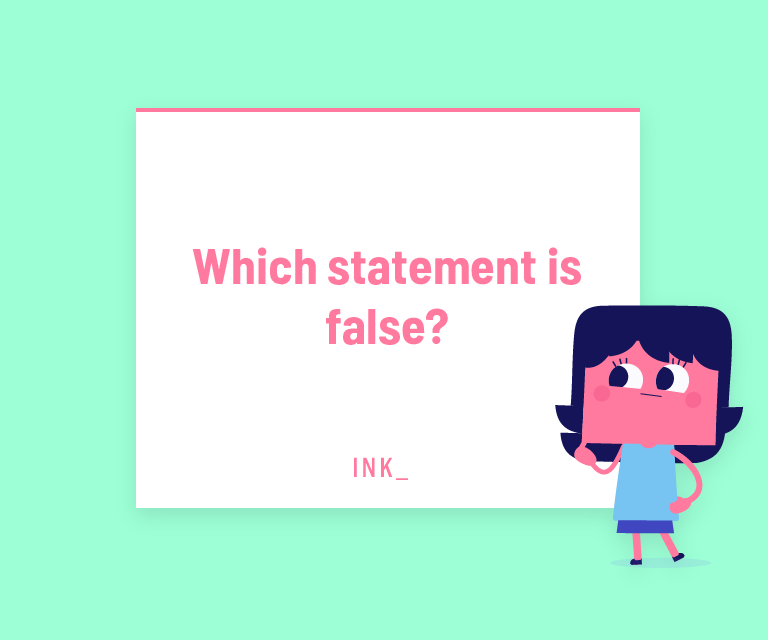

The answer is C. Excessive use of comma splices can make it challenging to follow an author’s train of thought.
Comma Splice Question #3
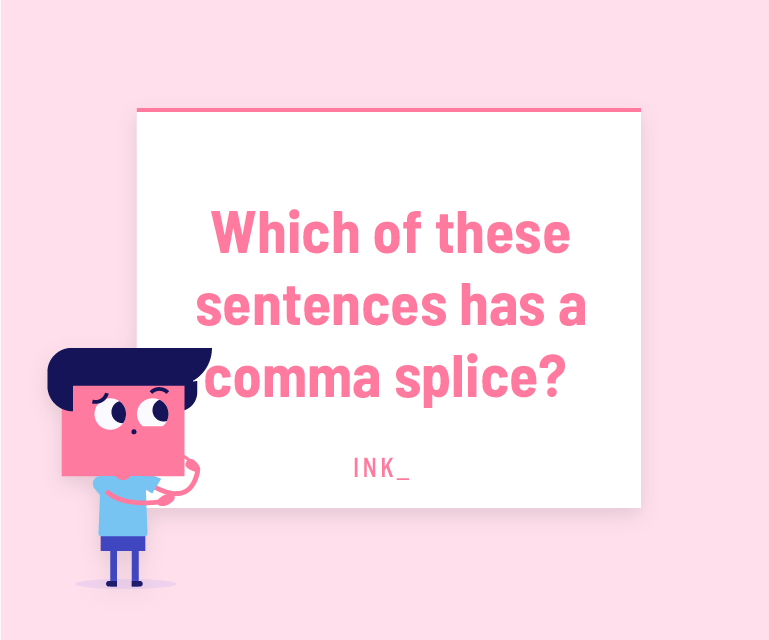

The answer is B. The sentence contains two independent clauses that can exist on their own. So, it doesn’t need a comma.
Comma Splices Question #4
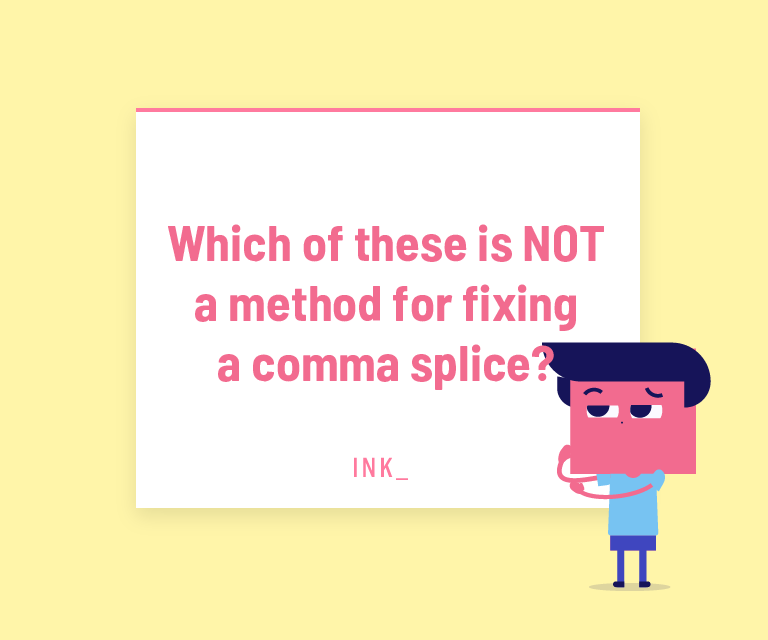

The answer is D. Removing the comma still creates a fused sentence.
Comma Splice Question #5
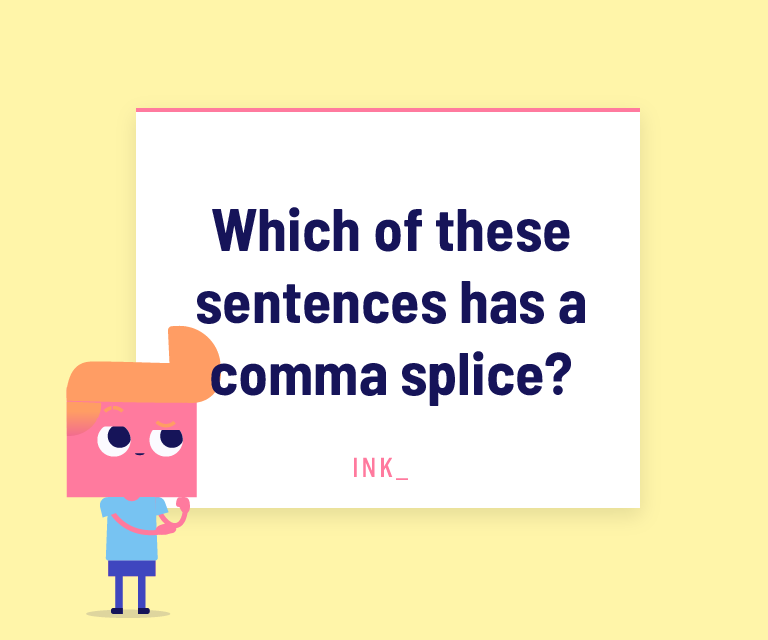

The answer is A. The sentence contains two complete thoughts that can exist on their own.

Genius! Thank you!
Thank you for the kind comment! Cheers